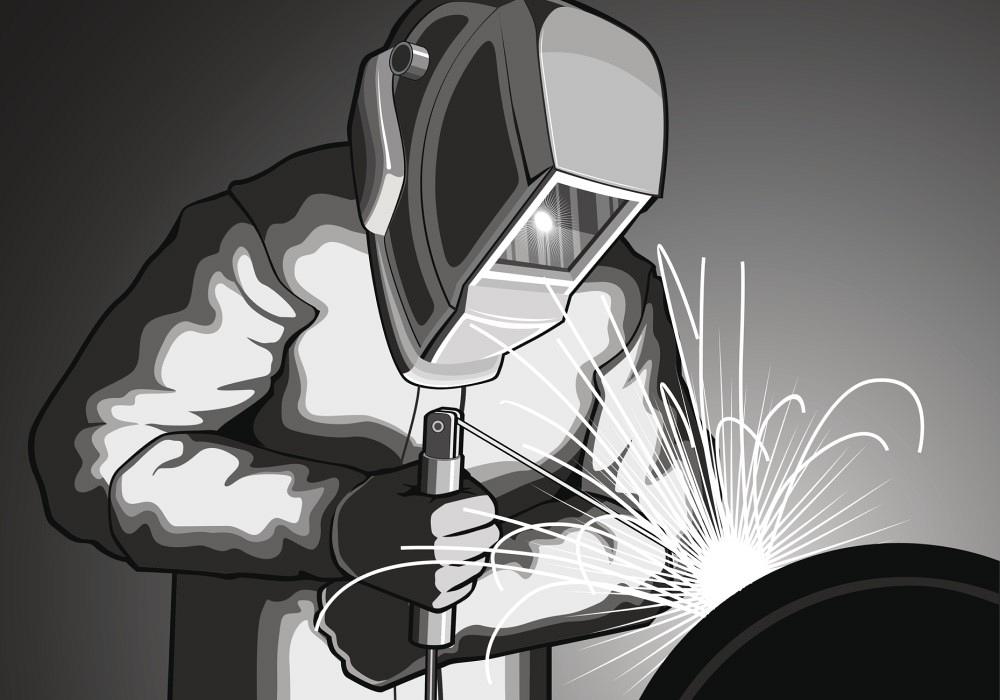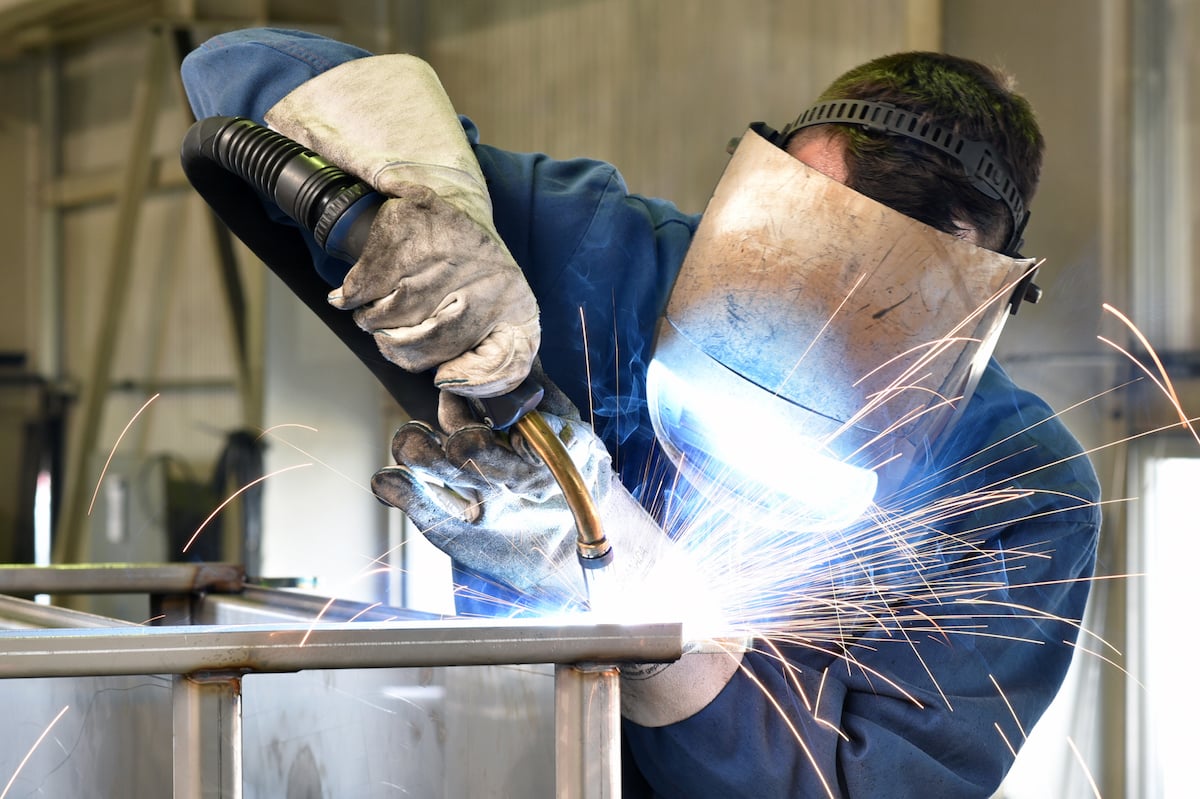All About Welding: Trick Insights Into Techniques and Finest Practices for Success
Welding encompasses a variety of strategies, each matched for particular products and applications. Recognizing these methods, such as GMAW, SMAW, and TIG, is vital for attaining suitable outcomes. The appropriate equipment and safety methods can not be overlooked. As prep work and fixing play vital duties in the welding procedure, understanding these elements can greatly improve the top quality of the end product. What are the key variables that assure an effective weld?
Understanding Various Welding Techniques
Welding methods incorporate a range of techniques, each fit to certain applications and materials. Amongst the most usual techniques are Gas Steel Arc Welding (GMAW), Shielded Metal Arc Welding (SMAW), and Tungsten Inert Gas Welding (TIG) GMAW, also called MIG welding, is prominent for its speed and adaptability, making it optimal for thin materials. SMAW, or stick welding, is preferred for its simpleness and efficiency in exterior settings, especially with thicker metals. TIG welding supplies precision and control, making it ideal for detailed job and non-ferrous steels (Montana Mobile Welding and Repair). Each method has its distinct advantages and factors to consider, enabling welders to pick the most effective method based on the task's requirements, product kind, and desired outcomes. Comprehending these methods is essential for effective welding
Important Welding Tools and Devices
While different welding methods need certain abilities, the ideal tools and tools are similarly essential for accomplishing top quality outcomes. Important welding devices consists of welding equipments, which vary depending upon the strategy-- such as MIG, TIG, or stick welding. Protective equipment, consisting of handwear covers, aprons, and safety helmets, assurances safety and comfort during the procedure. On top of that, fixtures and clamps aid safeguard materials in position, making sure accuracy in welds. Consumables like welding rods, wire, and shielding gas are likewise vital components that influence the high quality of the weld. Furthermore, tools such as cutters and grinders assist in surface area prep work and post-weld finishing, contributing to an expert outcome. Spending in top notch tools ultimately improves the efficiency and efficiency of welding projects.
Security Practices in Welding
Proper safety and security techniques are necessary in the welding industry to shield employees from possible threats. Welders must put on proper individual protective devices (PPE), consisting of helmets with appropriate shading, gloves, and flame-resistant garments. Ample air flow is important to decrease exposure to harmful fumes and gases produced during the welding procedure. In addition, workers need to be educated in the correct handling of welding devices to stop crashes. Fire precaution, such as maintaining combustible materials away from the welding area and having fire extinguishers conveniently available, are essential. Normal inspections of tools and offices can aid recognize potential dangers before they lead to accidents. By sticking to these safety techniques, welders can develop a much safer working environment and minimize threats connected with their profession.
Preparing Materials for Welding
Preparing materials for welding is an important step that considerably influences the quality and honesty of the final item (Montana Mobile Welding and Repair Fabrication). Correct preparation includes cleansing the surface areas to get rid of pollutants such as dirt, corrosion, and oil, which can compromise the weld. Strategies such as grinding, fining sand, or utilizing solvents are typically used to attain a clean surface area. In addition, making sure that the materials fit with each other comfortably is important; spaces can cause weak welds. It's additionally vital to consider the alignment and positioning of the parts, as this will influence the convenience of welding and the last end result. Choosing the suitable filler product and ensuring compatibility with the base steels is crucial for accomplishing solid, durable welds.
Tips for Getting High-Quality Welds
Achieving top notch welds requires attention to information and adherence to best techniques throughout the welding process. Proper joint preparation is crucial, ensuring surfaces are cost-free and clean from pollutants. Selecting the proper filler product and welding technique based on the base steels is important for perfect bonding. Keeping constant travel rate and angle while welding can promote and prevent defects uniformity. In addition, controlling heat input is vital; excessive heat can cause warping and deteriorated joints. Frequently examining the welds during the procedure permits for prompt changes if required. Utilizing proper post-weld treatments, such as cleaning and anxiety relief, can boost the longevity and integrity of the weld, inevitably making certain an effective result.
Fixing Usual Welding Issues
Welding frequently offers difficulties that can affect the quality and stability of the end product. Typical problems such as porosity, irregular weld beads, and getting too hot can arise, each needing particular repairing strategies. Comprehending these troubles is essential for welders to boost their skills and achieve suitable results.
Porosity Troubles Explained
Porosity can typically be neglected, it remains a vital concern in welding that can compromise the integrity of an ended up product. Porosity refers to the visibility of small gas pockets within the weld bead, which can lead and compromise the joint to premature failure. This problem generally develops from contaminants, dampness, or inappropriate amp mig welder protecting gas coverage throughout the welding procedure. To alleviate porosity, welders need to confirm that the base products are dry and tidy, use appropriate protecting gases, and preserve regular welding criteria. Routinely inspecting the tools and setting her response can likewise help identify possible issues before they materialize in the weld. Resolving porosity successfully is essential for attaining strong, resilient welds that fulfill high quality standards.

Inconsistent Weld Beads
Inconsistent weld beads can significantly impact the quality and strength of a finished product. Different elements add to this problem, consisting of improper traveling rate, incorrect amperage settings, and inconsistent electrode angles. When the welder relocates also promptly, a bead may appear slim and do not have penetration, while moving too slowly can trigger excessive build-up. Furthermore, utilizing the incorrect amperage can cause either damaging or extreme spatter, both of which concession weld integrity. The welder's strategy, such as irregular lantern movement, can also lead to irregular bead look. To mitigate these problems, welders should concentrate on preserving consistent, controlled motions and making certain proper devices setups to attain harmony in their welds. Uniformity is crucial to attaining reliable and solid welds.
Getting Too Hot and Warping Issues
Excessive heat throughout the welding process can lead to considerable overheating and warping issues, affecting the structural honesty of the work surface. These troubles commonly materialize as distortion, which can compromise placement and fit-up, making additional setting up challenging. Aspects contributing to overheating include the option of welding parameters, such as voltage and travel speed, in addition to the kind of product being bonded. To minimize these issues, welders must keep constant travel rate and ideal warmth input while monitoring the workpiece temperature. Additionally, preheating or post-weld warmth therapy can help relieve anxieties triggered by rapid cooling - Fabrication. Regular examination and adherence to finest practices are necessary in protecting against getting too hot and making sure the long life and integrity of welded structures
Regularly Asked Inquiries
What Are the Occupation Opportunities in the Welding Industry?
The welding market offers varied occupation possibilities, consisting of placements as welders, designers, assessors, and instructors. Experts can work in production, building, aerospace, and automotive sectors, taking advantage of solid need and affordable wages in various roles.
Just How Can I Boost My Welding Speed Without Sacrificing Top Quality?
To improve welding rate without compromising top quality, one need to practice effective strategies, maintain devices, optimize setups, and improve hand-eye control. Normal training and seeking feedback can also considerably add to accomplishing faster, premium welds.
What Qualifications Are Offered for Welders?
Numerous qualifications exist for welders, including those aluminum filler from the American Welding Society (AWS), the National Center for Building And Construction Education and Research Study (NCCER), and different industry-specific organizations. These credentials improve employability and demonstrate ability efficiency.
Exactly How Does Welding Influence the Properties of Metals?
Welding affects the residential or commercial properties of steels by modifying their microstructure, which can result in modifications in solidity, ductility, and strength. Heat input and air conditioning prices during the procedure considerably influence these material attributes.
Can I Weld Dissimilar Metals With Each Other?
